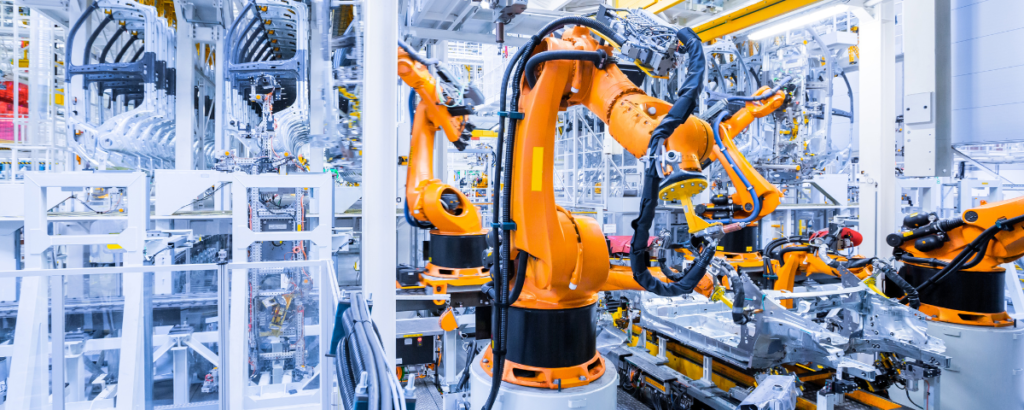Industry 5.0 technologies: the union of artificial intelligence and sustainability in the food sector!
Industry 5.0 technologies: the union of artificial intelligence and sustainability in the food sector Industry 5.0 is a new technological frontier that is revolutionising production and industrial processes in various sectors, and the food sector is no exception. This evolution is characterised by the integration of artificial intelligence (AI) and sustainable practices, creating a synergy that has the potential to transform the entire food production ecosystem. In this article, we will explore how Industry 5.0 is combining artificial intelligence and sustainability to create innovative solutions that meet the environmental and economic challenges of the sector What is Industry 5.0 and how it impacts the food sector Industry 5.0 differs from its predecessor, Industry 4.0, in its emphasis on the interaction between humans and intelligent machines. While Industry 4.0 focuses on automation, Industry 5.0 recognises the importance of human labour integrated with advanced technologies such as artificial intelligence, collaborative robotics and data analysis. In the food industry, this fusion makes it possible to optimise production processes, improve product quality and, above all, reduce environmental impact. The adoption of smart technologies in Industry 5.0 enables companies to address global sustainability challenges such as resource optimisation, waste reduction and energy efficiency. Thanks to AI, operations in the food industry can be carried out more efficiently, accurately and in a way that is less harmful to the environment. The role of artificial intelligence in Industry 5.0 Artificial intelligence plays a crucial role in Industry 5.0, taking automation to the next level. In the food industry, AI is used to analyse large amounts of data from various sources, such as production sensors, demand forecasts, consumer habits and product life cycles. This data is processed to optimise production, reduce costs and improve quality. A tangible example of the use of AI in the food industry is the optimisation of supply chains. With the help of artificial intelligence, demand can be predicted more accurately, reducing waste and ensuring that production is adapted to market needs. Furthermore, intelligent systems can detect defects in food products in real time, preventing them from reaching consumers. Sustainability in Industry 5.0: waste reduction and resource management Sustainability is one of the main motivations for the food sector to adopt Industry 5.0 technologies. In an era of increasing environmental concerns, food companies are looking for solutions to reduce their ecological impact. Smart technologies offer effective answers, enabling companies to optimise the use of natural resources, reduce waste and improve energy efficiency. Artificial intelligence-powered predictive analytics, for example, can reduce raw material waste, as production can be adjusted based on consumption forecasts. Furthermore, intelligent automation in packaging and distribution reduces packaging waste and improves logistical efficiency. Water and energy management is also benefiting from Industry 5.0 solutions. The use of smart sensors and AI-based algorithms allows real-time monitoring of consumption, which reduces waste and optimises the use of resources. Sustainable innovation in food packaging One of the areas where Industry 5.0 is making a big difference is in the food packaging sector. Packaging is a major cause of environmental pollution, especially single-use plastics. Advanced technologies, including robotics, 3D printing and artificial intelligence, are revolutionising this aspect of the food sector. Intelligent packaging solutions, for example, can be designed to minimise the use of non-recyclable materials and improve the yield of recycled materials. Intelligent systems can also monitor the condition of the product within its packaging, extending its shelf life and reducing the risk of waste. In addition, sustainable technologies applied to food packaging allow the use of biodegradable and compostable materials, reducing environmental impact. AI and traceability: ensuring food quality and safety Traceability is another key aspect in Industry 5.0, particularly in the food sector, where safety and quality are essential. Artificial intelligence makes it possible to monitor and trace every stage of the production process, from the collection of raw materials to the distribution of the finished product. Thanks to AI-based systems, it is possible to ensure that food products comply with quality and safety standards, reducing the risk of contamination or defects. Automated traceability also makes it possible to react quickly in the event of problems, such as product recalls, ensuring greater safety for consumers and reducing financial losses for companies. The overall benefits of Industry 5.0 in the food sector In summary, Industry 5.0 is bringing a real revolution to the food industry, creating a more sustainable, efficient and safe environment. The integration of artificial intelligence and sustainable practices not only helps companies reduce their environmental impact, but also improves product quality and optimises production processes. AI-based solutions such as predictive analytics, collaborative robotics, intelligent packaging and advanced traceability are making the food industry more environmentally responsible and more competitive in the global marketplace. As Industry 5.0 technologies continue to advance, the future of the food sector will increasingly focus on innovation and sustainability Join the conversation on Industry 5.0 in the food sector Industry 5.0 is changing the face of the food industry, bringing innovations that will improve sustainability and efficiency significantly. Want to learn more about how these technologies can transform your industry or stay up-to-date on the latest trends? Visit our blog and interact with us!









